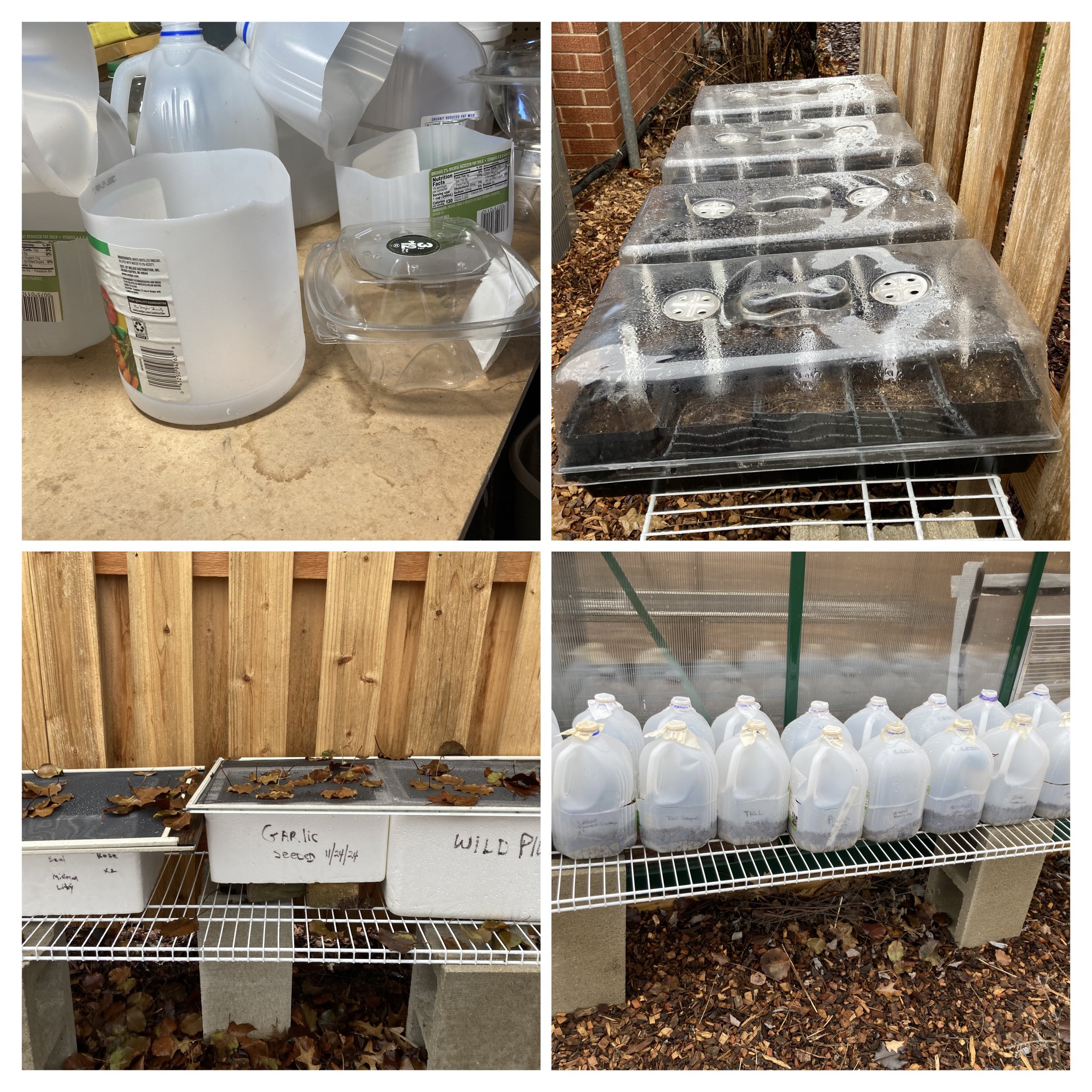Winter Sowing Revisited…
I have been winter sowing for several years. It is the best and easiest way for me to start native plants for the upcoming growing season. Overwintering the seeds outside in containers in a moist cold soil, exposes the seeds to the winter elements needed to break dormancy and also protects the seeds now, and the seedlings later in Spring, from garden critters. Using containers to winter sow native seeds is easy. See my blog post from December 27, 2022 for the simple steps for winter sowing in containers. I still follow the process outlined in that 2022 post, but I have learned some things along the way that has made the process more organized and successful for me.
There are many different types of containers that are great for winter sowing. Any plastic container with a clear top to allow in light will work as long as the container is at least four inches deep. The smaller and more shallow the container, the quicker the soil will dry out when the weather starts to warm. Also, native plants develop long roots quickly. For these reasons, the deeper the container, the better it is for starting native seeds. I have used leftover styrofoam chests covered with screens, plastic take out containers, milk jugs, and left over plastic flower pots with success. The last couple of years our Springs have been wet and warm resulting in seedling damage from hungry slugs and earwigs. Last year I added a paper coffee filter to the bottom of each of the containers before I filled the container with soil. So far this has prevented the slugs and earwigs from entering the containers through the bottom drainage holes. I now elevate the trays, pots and milk jugs off the ground.
Labeling and keeping a record of what you have planted is really important. I always put a label with the plant name on the inside of the container and I also add the plant name to the outside of the container. Even permanent markers will start to fade when exposed to sunlight, so relabeling throughout the growing season may be necessary. Also I keep a spreadsheet of the plant species and the date the seeds were winter sown.
It’s never too early to winter sow. Any seed requiring 30, 60, 90, or 120 days of cold moist stratification can be winter sown as early as November. The days for stratification are minimum days needed for stratification and not a specific requirement. I have just completed winter sowing all of the seeds requiring cold moist stratification. If you have not started yet, no worries! There is still plenty of winter left to winter sow. In the Chicago area we have had fluctuating temperatures from a week in the teens to week long stretches of temperatures in the 40s and 50s. The conditions are still perfect for winter sowing because the night time temperatures have been at or below 40 degrees.
Prairie Plant Revival has many native seeds available (free). If you want to give winter sowing a try, send me an email at prairieplantrevival@gmail.com.


